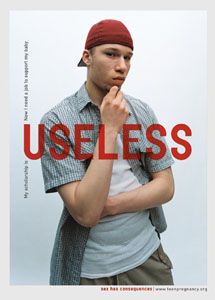PRODUCTION
AND INFLUENCE
The
5 key principles we talked about in the ITAP lecture this week were
Interpretation, Delivery, Medium, Testing and Methodology. I have decided to
talk about Interpretation and Testing.
Interpretation
Interpretation
is an explanation of meaning and a particular view of an artistic work. Another
word which is worth to mention and which is connected with interpretation is
Zeitgeist (it refers to ideas and spirit of the age or spirit of the time, it
indicates a certain period or place).
The
work of any artist is influenced by the surrounding world, it should reflect
media, politics, cultural and artistic aspect at the time. Therefore
interpretation of one story can be created in various ways. However the content
should always match within the era of production. Also the way the story is
introduced to the audience is changing. Nowadays it can be expressed by
communicating online, magazines, posters, t-shirt prints, film etc. It means it
can be displayed on a diverse range of platforms such as photography, media,
fashion, advertising, animation. Not only the story interpretation and messages
sent are different but also the feedback/response from the viewer is changed.
Interpretation
of a historical content involves understanding the character in more defined
lines. As my example i have chosen to use the Disney tale of Snow White. It Is
a story known worldwide created in Germany and was first originally illustrated
by Alexander Zick in the 19th century. The image is powerful but on
the other hand simple and primitive, we can see the lack of techniques which
were available at that time. Not long after this we can see an alternative interpretation
illustrated by Franz Jűttner.
Below
we can see another version of an altered character portrayal of Snow White. This
one depicts her as a bad character and is called the Dark Princess. It has been
created by Artist Laura Ambros in the gothic approach.
Australian artist Courtney Brims' imagined the Snow White influenced by Victorian style and exaggerated the red apple, emphasising in symbology in the tale.
The
Snow White story has been created in many different mediums including film,
photography, animation and advertisement.
Two
movies where released in 2012.
Mirror
mirror is a fantasy comedy based on fairy tale ‘’Snow White’’ directed by
Tarsem Singh. In this interpretation the seven dwarfs are replaced by seven
resourceful rebels who are enlisted by the Princess, Snow White, to help her
win back her birthright.
Then later in the year ‘Snow White and the Huntsman’
was released. Created by Rupert
Sanders, this offered a fresh, somewhat dark and interesting twist on the old
fairy tale. Continuing the theme of a love story the handsome prince is
replaced by a ‘rugged’ huntsman who having aided the evil Queen to capture the
princess ultimately falls in love with her, helping her to defeat the wicked
queen and win back her Kingdom.
Animation
created by Disney.
Annie
Leibovitz inspired by Disney World created a series of fairytale photos
including Snow White. These pictures illustrate well the various
interpretations of the ‘mystique’ of Snow White
Barbie
doll 'Snow White'
In
each example we can clearly see reused and rehashed interpretation which
communicate a new deconstructed meaning. Each time it presents a new twist,
point of view, more detail and use of technology.
Testing
Testing
is extremely vital for visual communicators. Illustrators, photographers, animators or graphic designers
displaying their work throughout websites, blogs, exhibitions, galleries. this
helps to see how it looks integrated in various ways. It enables feedback and
reaction from the potential audience. It shows how successful we are and gives
us confidence to develop our ideas or plan how to progress forward.
Nowadays
it is very popular is to have a personal blog, website, Facebook or Twitter
page to post the work. It provides easy access to people around the World.
Below is a print screen of my photography page on FB.
Image
source

























